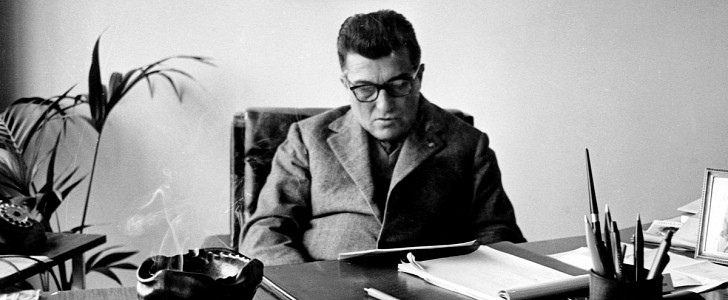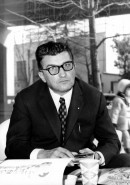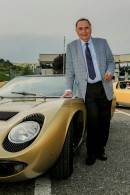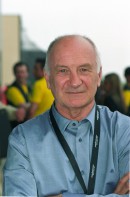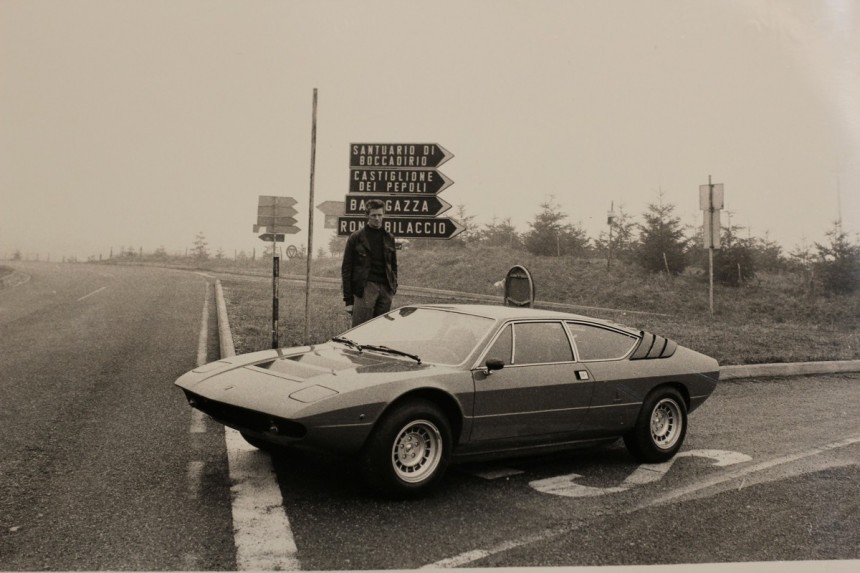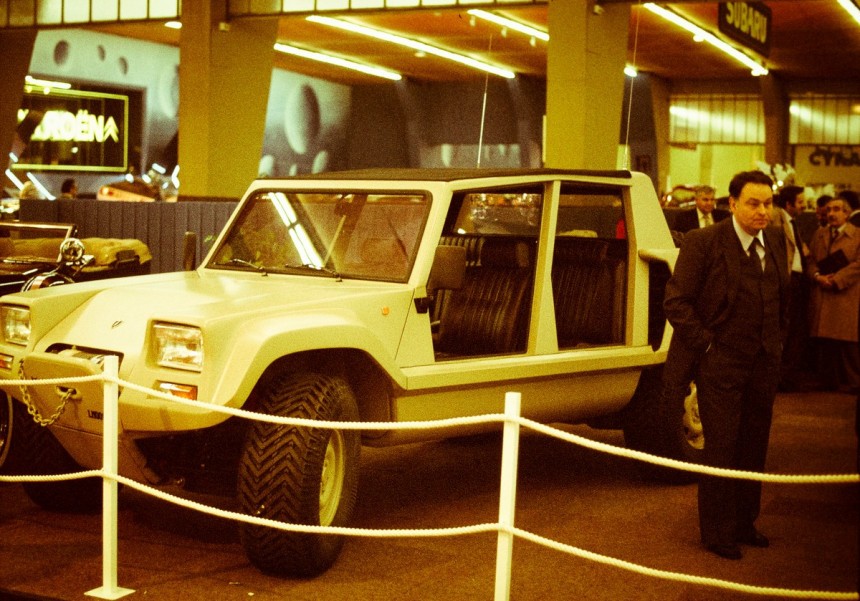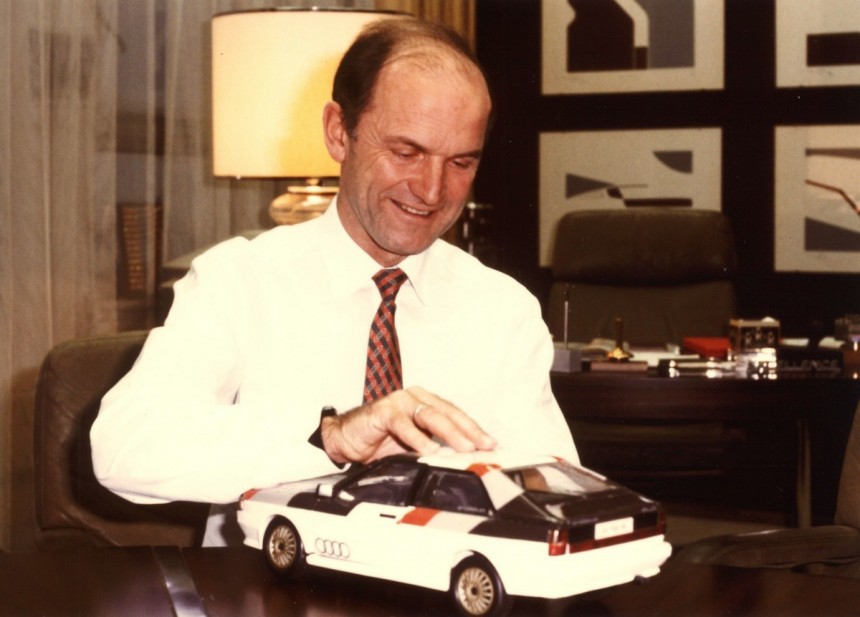The Italian brand's birth and evolution started with six key people whose innovations made the Lamborghini name known worldwide, and their legacy still lives thanks to a seventh famous entrepreneur.
Every car brand started from something. The Italian carmaker started from Ferrucio Lamborghini, a tractor-builder who tried to make a better vehicle than Ferrari.
He was born in 1916, and his father was a viticulturist. Ferrucio was not that much attracted by grapes. He became more interested in mechanical machinery and followed a technical institute near Bologna. In 1940, the young engineer was drafted into the army and sent to Rhodes island as an Italian Royal Air Force mechanic. When the British Army conquered the airbase in 1945, Lamborghini was imprisoned and released in 1946.
Returned home, he started a small garage and took part in the Italian reconstruction effort. For that, he used six-cylinders Morris trucks engines from army supplies. In 1948 he produced and sold the first "Carioca" tractor. It was a great success, and soon he had to hire more and more people. By the early '50s, he was attracted by fast GTs. He owned some of the most famous vehicles from those times, such as the Mercedes-Benz SL, Jaguar E-Type, Alfa Romeo, and Maserati 3500.
In the early '60s, he bought a Ferrari 250 GTO. That car's performance was good, but it was more or less a race car in street clothing. Lamborghini had many complaints about it and addressed them to the company's owner, Enzo Ferrari. But the Modena-based carmaker told him to stick to his tractors. That was the spark. The ambitious "Nuccio" Lamborghini made the promise to beat Ferrari at his own game.
Shortly after he returned to its Sant'Agata Bolognese factory, he attracted aeronautical engineer Gian Paolo Dallara who worked at Maserati. Dallara's involvement in the young company led to the first mass-production Lamborghini: the 350 GT. He had to start from the car developed by the previous Lamborghini lead engineer Giotto Bizzarini, use the design made by a less-known designer and built by Carrozzeria Touring. Thus, the first production model wearing the Raging Bull badge hit the roads in 1964. His best achievement at Lamborghini was the 1966 Miura, the vehicle that invented the automotive term "supercar."
Dallara didn't stay too much in Lamborghini's team since he became more attracted by the magical world of a new sport: Formula 1. In 1968, his position was taken by his assistant, Paolo Stanzani. Stanzani was a mechanical genius, and his involvement in the Countach development was notorious. Nevertheless, it was his most important success in the industry. That car became the favorite poster in boys' dorms and the fastest supercar in the world for two decades. But he couldn't do that all by himself.
The same year when Paolo Stanzani signed the contract with Ferrucio Lamborghini, another young man joined the team: Bob Wallace. He had been born in 1938 in Auckland, New Zealand, and arrived in Italy in 1959, hoping to get a job at Maserati. But he didn't speak Italian, and the Trident brand didn't offer him a job. He ended up as a mechanic for a few racing teams before joining Lamborghini in 1963. His job was to test drive cars and find what's missing and what else needed to be done.
Wallace was a natural mechanical talent and knew how much he could push the cars and, most importantly, what to change and make them faster. His belief was that Lamborghinis could achieve their potential if they were lighter. Thus, he developed the Miura P400 "Jota" and the Jarama "Bob." The former was built according to FIA's rules appendix J (hence the name Jota). At the same time, the latter was intended for rally-racing.
In 1974, due to the 1973 oil crisis and the world financial downturn, Ferrucio Lamborghini sold the sports car brand and retired. He proved that his cars were faster, more reliable, and had better interiors than the Modena-made sports cars. Wallace left the company in 1975 and moved to Phoenix, Arizona, where he established an independent mechanic shop.
Franco Scaglione is one of the most important sports car designers, but his genius was often overshadowed by his employers. After he worked with Nuccio Bertone, he created the Porsche 356 B Abarth Carrera GTL. In addition, he was interested in aerodynamics, which made Lamborghini hire him to create the 350 GTV concept car lines. This was the first vehicle that wore the Lamborghini badge.
In 1975, after Bob Wallace left the company, Lamborghini's new owners needed new engineers. They hired Giulio Alfieri, who used to work for 22 years for Maserati. He continued his predecessors' work and became Lamborghini's General Manager in 1982. His involvement led to the rapid development of carbon fiber in the car industry. He also developed the 1988 Countach 25th Anniversary, the Diablo, and the Rambo-Lambo LM002.
A new era began for Lamborghini in 1998 when Audi bought the Italian carmaker from an Indonesian and Malaysian group. The mastermind behind that acquisition was Ferdinand Piech, grandson of Ferdinand Porsche and founder of the VW brand. Thanks to the deep pockets of the German group, the Raging Bull of Sant'Agata Bolognese raised up again and expanded its range. But without the former six key-figures people from its beginning, that company couldn't exist at all.
He was born in 1916, and his father was a viticulturist. Ferrucio was not that much attracted by grapes. He became more interested in mechanical machinery and followed a technical institute near Bologna. In 1940, the young engineer was drafted into the army and sent to Rhodes island as an Italian Royal Air Force mechanic. When the British Army conquered the airbase in 1945, Lamborghini was imprisoned and released in 1946.
Returned home, he started a small garage and took part in the Italian reconstruction effort. For that, he used six-cylinders Morris trucks engines from army supplies. In 1948 he produced and sold the first "Carioca" tractor. It was a great success, and soon he had to hire more and more people. By the early '50s, he was attracted by fast GTs. He owned some of the most famous vehicles from those times, such as the Mercedes-Benz SL, Jaguar E-Type, Alfa Romeo, and Maserati 3500.
Shortly after he returned to its Sant'Agata Bolognese factory, he attracted aeronautical engineer Gian Paolo Dallara who worked at Maserati. Dallara's involvement in the young company led to the first mass-production Lamborghini: the 350 GT. He had to start from the car developed by the previous Lamborghini lead engineer Giotto Bizzarini, use the design made by a less-known designer and built by Carrozzeria Touring. Thus, the first production model wearing the Raging Bull badge hit the roads in 1964. His best achievement at Lamborghini was the 1966 Miura, the vehicle that invented the automotive term "supercar."
Dallara didn't stay too much in Lamborghini's team since he became more attracted by the magical world of a new sport: Formula 1. In 1968, his position was taken by his assistant, Paolo Stanzani. Stanzani was a mechanical genius, and his involvement in the Countach development was notorious. Nevertheless, it was his most important success in the industry. That car became the favorite poster in boys' dorms and the fastest supercar in the world for two decades. But he couldn't do that all by himself.
The same year when Paolo Stanzani signed the contract with Ferrucio Lamborghini, another young man joined the team: Bob Wallace. He had been born in 1938 in Auckland, New Zealand, and arrived in Italy in 1959, hoping to get a job at Maserati. But he didn't speak Italian, and the Trident brand didn't offer him a job. He ended up as a mechanic for a few racing teams before joining Lamborghini in 1963. His job was to test drive cars and find what's missing and what else needed to be done.
In 1974, due to the 1973 oil crisis and the world financial downturn, Ferrucio Lamborghini sold the sports car brand and retired. He proved that his cars were faster, more reliable, and had better interiors than the Modena-made sports cars. Wallace left the company in 1975 and moved to Phoenix, Arizona, where he established an independent mechanic shop.
Franco Scaglione is one of the most important sports car designers, but his genius was often overshadowed by his employers. After he worked with Nuccio Bertone, he created the Porsche 356 B Abarth Carrera GTL. In addition, he was interested in aerodynamics, which made Lamborghini hire him to create the 350 GTV concept car lines. This was the first vehicle that wore the Lamborghini badge.
In 1975, after Bob Wallace left the company, Lamborghini's new owners needed new engineers. They hired Giulio Alfieri, who used to work for 22 years for Maserati. He continued his predecessors' work and became Lamborghini's General Manager in 1982. His involvement led to the rapid development of carbon fiber in the car industry. He also developed the 1988 Countach 25th Anniversary, the Diablo, and the Rambo-Lambo LM002.
